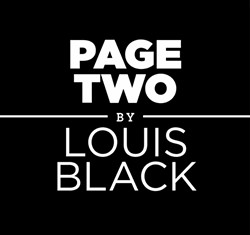Page Two
Kurt Vonnegut Jr. would call it a Wampeter.
By Nick Barbaro, Fri., Aug. 4, 2000

c. 1400: As has been true since the inventions of alphabets and paper, all books are written entirely by hand. In Europe, the vast majority are bibles produced in cloistered monasteries, but increasingly, lay scribes are producing for university communities, as well.
Handwriting styles -- the first "typefaces" -- have begun to diverge into two main schools as well -- the blackletter, or Gothic, letterforms of the north, and the flowing, more legible, "humanist" scripts of the Italian renaissance, which came to be known as Roman faces.
1455: Johann Gutenberg completes his famous 42-Line Bible, the first mass-produced book ever (although Chinese and Korean metalworkers have been able to cast type for over a century). His blackletter type, modeled after the script produced by the wide-tipped calligraphic pens of northern Europe, would remain the standard, especially for religious texts and especially in Germany, up until World War II.
1501: Venetian scholar/printer Aldus Manutius invents italic type for use in a pocket-sized edition of Virgil's poetry.
1839: Abner Doubleday supposedly invents the game of baseball at a field in Cooperstown, N.Y. (Later research has apparently proved that he was never in Cooperstown in 1839, but, to borrow from The Man Who Shot Liberty Valance, "when the truth becomes legend, print the legend.")
1881: Detroit Wolverines Baseball Club founded; plays in the National League through 1888, then folds.
1885: Linn Boyd Benton patents the Benton punch cutting machine -- amazingly, one of the first major technological advances in typography since Gutenberg's time. For 400 years, all the great typographers -- William Caslon, Claude Garamond, John Baskerville, Giambattista Bodoni, Fermin Didot -- had had to hand-carve each of their original letterforms. Benton's invention, and other industrial revolutions, open a whole new world for typographers.
1897: Morris Fuller Benton -- Linn's son and a commercial designer and printer since the age of 11 -- produces his first typeface for the American Type Founders Company: Cloister Old Style, a whimsically-named version of the old German blackface type. A 1904 variant, Cloister Black, is the script used on the cover of this issue.
1900-1937: Over the next 40 years, Benton designed a huge number of well-known typefaces, from standard text faces such as Franklin Gothic, News Gothic, Century Schoolbook, Clearface, Garamond-3, and Bodoni, to such stylish deco classics as Parisian, Broadway, Hobo, and Stymie.
1901: The Detroit franchise returns as the Tigers, this time as a charter member of the fledgling American League. Their trademark Old English script "D" has endured as one of the most recognizable logos in all of sport.
1933: Germany's National Socialist (Nazi) Party comes to power. As one of their cultural initiatives, they encourage a return to the Teutonic script of their heritage, which had begun to be replaced by the simpler, more legible, roman faces. Fraktur becomes the government's semi-official typeface, and an enduring symbol of Nazism.
1933-1941: Hank Greenberg, the Tigers' first-baseman, is perhaps the most feared slugger in the AL, and the first Jewish baseball star.
Jan. 3, 1941: Nazis ban the use of gothic typefaces in Germany, declaring that they are Judenlettern, or Jewish type.
Dec. 7, 1941: When the U.S. enters WWII, Greenberg is the first major-leaguer to enlist in the U.S. Armed Forces. For three seasons of his baseball prime, he trades his Tiger D for an Army Air Corps insignia.
1945: The war ends; Greenberg, returning to the Tigers in midseason, homers in his first game back.
1950-1993: Metal type is replaced by, first phototypesetters, and then digital typefaces. Printers and publications, once limited in their choice of type styles and sizes, are now free to use a much wider variety for both legibility at various sizes, and for special effects.
1997: The Texas Legislature withdraws statewide regulation of exotic animals, including tigers and lions. The population of the big cats in Texas explodes, leading to a story in this issue.
2000: Searching for a font with religious connotations to use in the headlines for this week's cover story on Christian hip-hop in Round Rock, Chronicle art director Taylor Holland settles on Cloister Black from the Bitstream foundry. Then, noting that the other lead story in the issue has to do with tigers, and being a sports fan, he decides to extend the usage of Cloister to the exotic cats story, and thence to the other cover type as well.
So there you have it. The staff is divided over whether the "pun" is too obscure, or the type too illegible. We thought we'd let you decide.
PS: My son Zeke would no doubt note as well that Cloyster is a water Pokémon, the evolved form of Shellder.








